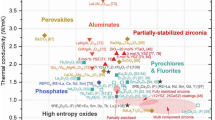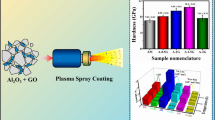Abstract
New thermal interface materials (TIM) with liquid metal (LM) as the main component show many advantages in the field of thermal management. However, it is prone to leakage and causes electronic components to fail due to its fluidity, corrosiveness and difficulty in adsorption, thus limiting its applications. In this paper, based on the high thermal conductivity of LM, the composite material made of eutectic gallium indium alloy (EGaIn) and nickel-plated copper mesh (NPCM) was prepared, and the TIM with high thermal conductivity, stability and reliability was obtained. With surface plating, the plating on the copper surface achieves an area coverage of up to 97.7%, effectively preventing EGaIn corrosion. The complete wetting between materials can be achieved through surface modification of NPCM with an EGaIn oxide layer. The surface modification of NPCM with EGaIn oxide layer can achieve complete wetting between materials. The thermal conductivity of the composite is 26.4 W m−1 K−1. Compared to Nickel foams (NiF), NPCM/EGaIn composite exhibits a 22.4% increase in thermal conductivity. In addition, its thermal conductivity fluctuates in a range below 7 percent even after undergoing high-temperature aging and low-temperature cycling. The actual load test demonstrated that the use of EGaIn/NPCM resulted in an 18.0% reduction in CPU full load temperature and a 78.0% decrease in maximum throttling peak, as compared to conventional silicone grease.








Similar content being viewed by others
Data and code availability
All data are available to readers.
References
Ni S-H, Hu Y-F, Huang Y-C et al (2022) A dual cooling composite film by subtly combining phase change materials and thermally conductive fillers for efficient thermal management. J Mater Sci 57:14464–14477. https://doi.org/10.1007/s10853-022-07551-8
Sun Z, Li J, Yu M, Kathaperumal M, Wong C-P (2022) A review of the thermal conductivity of silver-epoxy nanocomposites as encapsulation material for packaging applications. Chem Eng J 446:137319. https://doi.org/10.1016/j.cej.2022.137319
Shih M-K, Shih S, Liao T-W, Chen D-L, Liu DS, Tarng D (2022) Investigation into thermo-mechanical reliability of copper trace lines in stacked dies ball grid array packaging. Microelectron Rellab 130:114488. https://doi.org/10.1016/j.microrel.2022.114488
Zou L, Lin P, Zhang J, Su H, Chen Y (2022) Highly-efficient thermal management of electronic devices enabled by boron nitride-incorporated phase change material gels. J Mater Sci 57:20268–20284. https://doi.org/10.1007/s10853-022-07872-8
Sohel Murshed SM, Nieto de Castro CA (2017) A critical review of traditional and emerging techniques and fluids for electronics cooling. Renew Sustain Energy Rev 78:821–833. https://doi.org/10.1016/j.rser.2017.04.112
Hua W, Zhang L, Zhang X (2021) Research on passive cooling of electronic chips based on PCM: a review. J Mol Liq 340:117183. https://doi.org/10.1016/j.molliq.2021.117183
Tessier-Poirier A, Monin T, Léveillé É, Monfray S, Formosa F, Fréchette LG (2019) How evaporation and condensation lead to self-oscillations in the single-branch pulsating heat pipe. Phys Rev Fluids 4:103901. https://doi.org/10.1103/PhysRevFluids.4.103901
Yousefi T, Mousavi SA, Farahbakhsh B, Saghir MZ (2013) Experimental investigation on the performance of CPU coolers: effect of heat pipe inclination angle and the use of nanofluids. Microelectron Rellab 53:1954–1961. https://doi.org/10.1016/j.microrel.2013.06.012
Jouhara H, Chauhan A, Nannou T, Almahmoud S, Delpech B, Wrobel LC (2017) Heat pipe based systems-advances and applications. Energy 128:729–754. https://doi.org/10.1016/j.energy.2017.04.028
Chen H, Ruan X-h, Peng Y-h, Wang Y-l, Yu C-k (2022) Application status and prospect of spray cooling in electronics and energy conversion industries. Sustain Energy Techn 52:102181. https://doi.org/10.1016/j.seta.2022.102181
Deng Y, Zhang M, Jiang Y, Liu J (2022) Two-stage multichannel liquid–metal cooling system for thermal management of high-heat-flux-density chip array. Energ Convers Manage 259:115591. https://doi.org/10.1016/j.enconman.2022.115591
Li S, Liu JL, Ding L, Liu JX, Xu J, Peng Y, Chen MX (2021) Active thermal management of high-power LED through chip on thermoelectric cooler. IEEE T Electron Dev 68:1753. https://doi.org/10.1109/TED.2021.3062314
Tan H, Wu L, Wang M, Yang Z, Du P (2019) Heat transfer improvement in microchannel heat sink by topology design and optimization for high heat flux chip cooling. Int J Heat Mass Transf 129:681–689. https://doi.org/10.1016/j.ijheatmasstransfer.2018.09.092
Shamim MS, Narde RS, Gonzalez-Hernandez J-L, Ganguly A, Venkatarman J, Kandlikar SG (2019) Evaluation of wireless network-on-chip architectures with microchannel-based cooling in 3D multicore chips. Sustain Comput-infor 21:165–178. https://doi.org/10.1016/j.suscom.2019.01.008
Yang M, Li M-T, Hua Y-C, Wang W, Cao B-Y (2020) Experimental study on single-phase hybrid microchannel cooling using HFE-7100 for liquid-cooled chips. Int J Heat Mass Transf 160:120230. https://doi.org/10.1016/j.ijheatmasstransfer.2020.120230
Zhu K, Zheng M, Wang B, Dai B, Wang Y, Wei J, Chen X (2017) Experimental study of energy saving performances in chip cooling by using heat sink with embedded heat pipe. Energy Procedia 105:5160–5165. https://doi.org/10.1016/j.egypro.2017.03.1046
Koroglu C, Pop E (2023) High thermal conductivity insulators for thermal management in 3D integrated circuits. IEEE T Electron Dev 44:496–499. https://doi.org/10.1109/LED.2023.3240676
Zhao W, Yu G, Li S, Liu Z, Wu L (2023) Rate capability and Ragone plots for thermal management multifunctional structure designing. Int J Mech Sci 252:108367. https://doi.org/10.1016/j.ijmecsci.2023.108367
Feng C-P, Sun K-Y, Ji J-C, Hou L, Cui G-P, Zhao Z-G, Lan H-B (2023) 3D Printable, form stable, flexible phase-change-based electronic packaging materials for thermal management. Addit Manuf 71:103586. https://doi.org/10.1016/j.addma.2023.103586
Li J, Ye Z, Mo P et al (2023) Compliance-tunable thermal interface materials based on vertically oriented carbon fiber arrays for high-performance thermal management. Compos Sci Technol 234:109948. https://doi.org/10.1016/j.compscitech.2023.109948
Cheng G, Wang Z, Wang X, He Y (2022) All-climate thermal management structure for batteries based on expanded graphite/polymer composite phase change material with a high thermal and electrical conductivity. Appl Energy 322:119509. https://doi.org/10.1016/j.apenergy.2022.119509
Casper T, Römer U, De Gersem H, Schöps S (2020) Coupled simulation of transient heat flow and electric currents in thin wires: application to bond wires in microelectronic chip packaging. Comput Math Appl 79:1781–1801. https://doi.org/10.1016/j.camwa.2019.10.009
Prasher R (2006) Thermal interface materials: historical perspective, status, and future directions. P IEEE 94:1571–1586. https://doi.org/10.1109/JPROC.2006.879796
Wang S, Cheng Y, Wang R, Sun J, Gao L (2014) Highly thermal conductive copper nanowire composites with ultralow loading: toward applications as thermal interface materials. ACS Appl Mater Inter 6:6481–6486. https://doi.org/10.1021/am500009p
Xu S, Wang S, Chen Z, Sun Y, Gao Z, Zhang H, Zhang J (2020) Electric-field-assisted growth of vertical graphene arrays and the application in thermal interface materials. Adv Funct Mater 30:2003302. https://doi.org/10.1002/adfm.202003302
Ding S-C, Fan J-F, He D-Y et al (2022) High thermal conductivity and remarkable damping composite gels as thermal interface materials for heat dissipation of chip. Chip 1:100013. https://doi.org/10.1016/j.chip.2022.100013
Wang X, Lu C, Rao W (2021) Liquid metal-based thermal interface materials with a high thermal conductivity for electronic cooling and bioheat-transfer applications. Appl Therm Eng 192:116937. https://doi.org/10.1016/j.applthermaleng.2021.116937
Wang H, Chen S, Zhu X et al (2022) Phase transition science and engineering of gallium-based liquid metal. Matter 5:2054–2085. https://doi.org/10.1016/j.matt.2022.05.031
Ki S, Shim J, Oh S et al (2021) Gallium-based liquid metal alloy incorporating oxide-free copper nanoparticle clusters for high-performance thermal interface materials. Int J Heat Mass Transf 170:121012. https://doi.org/10.1016/j.ijheatmasstransfer.2021.121012
Hu X-Y, Tian Z, Chen C-H (2023) Minimizing interface thermal resistance via laser surface micropatterning for enhancing wetting of gallium-based liquid metal with copper. Int J Heat Mass Transf 214:124424. https://doi.org/10.1016/j.ijheatmasstransfer.2023.124424
Jiao T-M, Deng Q-B, Jing G-X et al (2023) Enhanced thermal conductivity of liquid metal composite with lower surface tension as thermal interface materials. J Mater Res Technol 24:3657–3669. https://doi.org/10.1016/j.jmrt.2023.04.006
Zhao Z-B, Soni S, Lee T, Nijhuis C-A, Xiang D (2023) Smart eutectic gallium-indium: from properties to applications. Adv Mater 35(1):2203391. https://doi.org/10.1002/adma.202203391
Wu Y-F, Kantharaj R, Alsaati A, Marconnet A, Handwerker C, Minerals M, Mater, S (2022) Investigation of thermal properties and thermal reliability of ga-based low melting temperature alloys as thermal interface materials (TIMs). 150th TMS Annual Meeting & Exhibition 1385–1395. https://doi.org/10.1007/978-3-030-92381-5_132
Wang S, Zhao X-Y, Luo J, Zhuang L-L, Zou D-Q (2022) Liquid metal (LM) and its composites in thermal management. Compos Part A-Appl S 163:107216. https://doi.org/10.1016/j.compositesa.2022.107216
Liu X-L, Chen M, Xu Q et al (2022) Bamboo derived SiC ceramics-phase change composites for efficient, rapid, and compact solar thermal energy storage. Sol Energy Mater Sol Cells 240:111726. https://doi.org/10.1016/j.solmat.2022.111726
Xu Q, Liu X, Luo Q et al (2022) Loofah-derived eco-friendly SiC ceramics for high-performance sunlight capture, thermal transport, and energy storage. Energy Storage Mater 45:786–795. https://doi.org/10.1016/j.ensm.2021.12.030
Luo Q, Liu X, Wang H et al (2022) Synergetic enhancement of heat storage density and heat transport ability of phase change materials inlaid in 3D hierarchical ceramics. Appl Energy 306:117995. https://doi.org/10.1016/j.apenergy.2021.117995
Haque A, Tutika R, Byrum RL, Bartlett MD (2020) Programmable liquid metal microstructures for multifunctional soft thermal composites. Adv Funct Mater 30:2000832. https://doi.org/10.1002/adfm.202000832
Bartlett MD, Kazem N, Powell-Palm MJ, Huang X, Sun W, Malen JA, Majidi C (2017) High thermal conductivity in soft elastomers with elongated liquid metal inclusions. Proc Natl Acad Sci USA 114:2143–2148. https://doi.org/10.1073/pnas.1616377114
Zheng J, Li X, Xing W et al (2022) Paste-like recyclable Ga liquid metal phase change composites loaded with miscible Ga2O3 particles for transient cooling of portable electronics. Appl Therm Eng 213:118766. https://doi.org/10.1016/j.applthermaleng.2022.118766
Liu G-Z, He D-J, Liu J-F et al (2023) Influencing factors for resistance performance of Cu/C composites to liquid Ga corrosion. Mater Today Commun 35:105999. https://doi.org/10.1016/j.mtcomm.2023.105999
Gao Z-Q, Wang C, GAO N, et al (2022) Electrodeposited Ni-W coatings as the effective reaction barrier at Ga-21.5In-10Sn/Cu interfaces. Surf Interfaces 30:101838. https://doi.org/10.1016/j.surfin.2022.101838
Zeng C-Z, Ma C-F, Shen J (2022) High thermal conductivity in diamond induced carbon fiber-liquid metal mixtures. Compos Part B-Eng 238:109902. https://doi.org/10.1016/j.compositesb.2022.109902
Wang X-H, Zeng T, Xu G-D, Zhang K, Yu S-W (2021) Predicting the equivalent thermal conductivity of pyramidal lattice core sandwich structures based on Monte Carlo model. Int J Therm Sci 161:106701. https://doi.org/10.1016/j.ijthermalsci.2020.106701
Acknowledgements
We are grateful for the financial support from the Fundamental Research Funds for the Central Universities of China (Grant No. 2022CDJQY-014) and 2022 Jiangsu Provincial Science and technology plan special fund BE2022110 (key research and development plan, industry prospect and key core technology).
Author information
Authors and Affiliations
Contributions
LT: data curation, investigation, methodology, validation, writing-original draft. JZ: conceptualization, formal analysis, methodology, resources, writing-review & editing. JS: conceptualization, funding acquisition, project administration, resources, supervision, writing & review & editing.
Corresponding author
Ethics declarations
Conflict of interest
There is no conflict of interest.
Ethical approval
Not applicable.
Additional information
Handling Editor: P. Nash.
Publisher's Note
Springer Nature remains neutral with regard to jurisdictional claims in published maps and institutional affiliations.
Rights and permissions
Springer Nature or its licensor (e.g. a society or other partner) holds exclusive rights to this article under a publishing agreement with the author(s) or other rightsholder(s); author self-archiving of the accepted manuscript version of this article is solely governed by the terms of such publishing agreement and applicable law.
About this article
Cite this article
Tan, L., Zhang, J. & Shen, J. Liquid metal/metal porous skeleton with high thermal conductivity and stable thermal reliability. J Mater Sci 58, 17829–17842 (2023). https://doi.org/10.1007/s10853-023-09159-y
Received:
Accepted:
Published:
Issue Date:
DOI: https://doi.org/10.1007/s10853-023-09159-y




